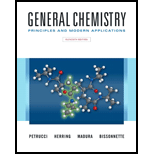
Concept explainers
(a)
Interpretation:
Define the term tert- in simple words.
Concept introduction:
IUPAC proposed the rules to name any chemical compound and also proposed different terms to name a chemical compound. These rules also used to draw the structures of chemical compounds with the given name. There are many abbreviations and common terms which either proposed by IUPAC or adopted by IUPAC to name chemical compounds and also to draw the structure of compounds.
(b)
Interpretation:
Define the given symbol in simple words.
Concept introduction:
IUPAC proposed the rules to name any chemical compound and also proposed different terms to name a chemical compound. These rules also used to draw the structures of chemical compounds with the given name. There are many abbreviations and common terms which either proposed by IUPAC or adopted by IUPAC to name chemical compounds and also to draw the structure of compounds.
(c)
Interpretation:
Define the term carbonyl group in simple words.
Concept introduction:
IUPAC proposed the rules to name any chemical compound and also proposed different terms to name a chemical compound. These rules also used to draw the structures of chemical compounds with the given name. There are many abbreviations and common terms which either proposed by IUPAC or adopted by IUPAC to name chemical compounds and also to draw the structure of compounds.
(d)
Interpretation:
Define the term primary
Concept introduction:
IUPAC proposed the rules to name any chemical compound and also proposed different terms to name a chemical compound. These rules also used to draw the structures of chemical compounds with the given name. There are many abbreviations and common terms which either proposed by IUPAC or adopted by IUPAC to name chemical compounds and also to draw the structure of compounds.
Want to see the full answer?
Check out a sample textbook solution
Chapter 26 Solutions
GENERAL CHEMISTRY-MOD.MASTERINGCHEM.
- represents .. O A. Ketone O B. Carboxylic acid O C. Amide O D. Aldehydearrow_forward1. The following molecule contains the functional groups A. secondary amine, secondary alcohol, ketone, carboxylic ester B. amide, primary alcohol, aldehyde, carboxylic acid C. secondary amine, two secondary alcohols, and two ketones D. primary amine, secondary alcohol, ketone, and carboxylic acid The following molecule contains the functional groups 2. A. primary alcohol and primary amine C. secondary alcohol and primary amine 3. A. alkene and secondary alcohol C. ketone and seconary alcohol The following molecule contains the functional groups B. ether and ketone D. ether and alkene 4. The following molecule A. primary amine and ketone C. secondary amine and alkyne NH₂ contains the functional groups B. secondary amine and alkene D. secondary amine and ketone ОН OH B. secondary alcohol and secondary amine D. primary alcohol and secondary amine NH₂ OHarrow_forwardMatch the structures with corresponding functional groups: a. ester b. carboxylic acid c. alkyne d. alkene e. alcohol f. aromatic compound g. ketone h. alkane i. aldehyde j. aminearrow_forward
- Draw structural diagrams for the following molecules a. N-ethyl-2-methyl-butan-1-amine b. 3,4-dihydroxy-4-fluoro-pentanoic acidarrow_forwardMatch the following molecules with the name of their functional group. A. Amine B. Amide C. Alcohol D.Ether E. Aldehyde F. Ketone G.Carboxcylic acid E.Ester Thanks.arrow_forward4. A functional group with a carbonyl group functionality is _________________.A. Alcohol B. Amine C. Ester D. Ketonearrow_forward
- Classify the following molecule: A. carbonyl B. ketone C. aldehyde D. amine E. acidarrow_forward2. Draw the structure for each compound and classify the amine as primary, secondary. or tertiary. a. 3-aminopentane b. 1,6-diaminohexane c. ethylphenylamine 3. Draw the structure for each compound. a. Aniline b. m-bromoanilinearrow_forwarda. How is the carboxyl group related to the carbonyl group and the OH group? b. How is the amide group related to the ca.boxyl group and amines?arrow_forward
- Choices: A. Alkyl Halides B. Ketone C. Alcohol D. Ether E. Aromatic hydrocarbon F. Amine G. Amide H. Ester I. Carboxylic acid J. Aldehydearrow_forwardPredict the functional group of the product for the following reaction. a. ester b. carboxylic acid c. hemiacetal d. acetal e. amidearrow_forwardWrite the chemical equations for tollen's test reaction for (Use structural formula) a. n-hexane b. cyclohexene c. benzene d. toluenearrow_forward
 Introductory Chemistry: An Active Learning Approa...ChemistryISBN:9781305079250Author:Mark S. Cracolice, Ed PetersPublisher:Cengage Learning
Introductory Chemistry: An Active Learning Approa...ChemistryISBN:9781305079250Author:Mark S. Cracolice, Ed PetersPublisher:Cengage Learning Chemistry & Chemical ReactivityChemistryISBN:9781133949640Author:John C. Kotz, Paul M. Treichel, John Townsend, David TreichelPublisher:Cengage Learning
Chemistry & Chemical ReactivityChemistryISBN:9781133949640Author:John C. Kotz, Paul M. Treichel, John Townsend, David TreichelPublisher:Cengage Learning Chemistry & Chemical ReactivityChemistryISBN:9781337399074Author:John C. Kotz, Paul M. Treichel, John Townsend, David TreichelPublisher:Cengage Learning
Chemistry & Chemical ReactivityChemistryISBN:9781337399074Author:John C. Kotz, Paul M. Treichel, John Townsend, David TreichelPublisher:Cengage Learning World of Chemistry, 3rd editionChemistryISBN:9781133109655Author:Steven S. Zumdahl, Susan L. Zumdahl, Donald J. DeCostePublisher:Brooks / Cole / Cengage LearningChemistry: Matter and ChangeChemistryISBN:9780078746376Author:Dinah Zike, Laurel Dingrando, Nicholas Hainen, Cheryl WistromPublisher:Glencoe/McGraw-Hill School Pub Co
World of Chemistry, 3rd editionChemistryISBN:9781133109655Author:Steven S. Zumdahl, Susan L. Zumdahl, Donald J. DeCostePublisher:Brooks / Cole / Cengage LearningChemistry: Matter and ChangeChemistryISBN:9780078746376Author:Dinah Zike, Laurel Dingrando, Nicholas Hainen, Cheryl WistromPublisher:Glencoe/McGraw-Hill School Pub Co Introductory Chemistry: A FoundationChemistryISBN:9781337399425Author:Steven S. Zumdahl, Donald J. DeCostePublisher:Cengage Learning
Introductory Chemistry: A FoundationChemistryISBN:9781337399425Author:Steven S. Zumdahl, Donald J. DeCostePublisher:Cengage Learning





